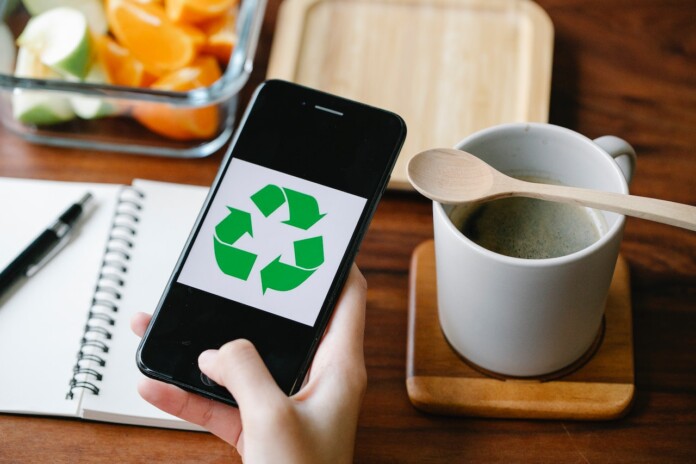With 72% of research respondents reporting they were actively buying more environmentally friendly products than they did five years ago and 81% saying they expect to buy even more over the next five years, there couldn’t be a better time to start an eco-friendly business.
The consumer move toward sustainability also coincided with the lasting changes the COVID-19 pandemic had on the economy. Home-based entrepreneurship is booming. According to the U.S. Small Business Association, 50% of small businesses begin at home. The pandemic alerted people to the advantages of running a business from their homes, and new internet platforms are making it more feasible than ever.
Table of Contents
- Understanding eco-friendly business concepts
- Setting up your at-home business headquarters
- Branding your home business
- Green marketing
- Setting up the technical infrastructure
- Eco-friendly business ideas
Understanding eco-friendly business concepts
An eco-friendly business uses sustainable materials and processes to make its products. These environmentally friendly businesses make reducing their carbon footprint and having a positive impact on the global warming crisis a priority. That’s why they use as little energy, water, and raw materials as possible. And when feasible, they use recycled or recyclable materials.
The importance of sustainability in modern entrepreneurship
Modern entrepreneurs understand that today’s consumers are looking for brands they can trust and connect to that have a socially responsible business model. In fact, according to a survey from McKinsey & Co., 66% of all respondents say they consider sustainability when they make a purchase.
Because of this understanding and considering the environmental issues facing people today and in the future, many entrepreneurs are moving to sustainable products that will win over more customers. And that has resulted in small businesses being the biggest drivers of bringing sustainability to market.
These eco-friendly initiatives benefit both the environment and society by lowering waste and carbon emissions and giving consumers the option to spend their money on products and services that align with their sustainability goals.
Setting up your at-home business headquarters
Now that you’ve decided to establish an eco-friendly at-home business, it’s time to set up your office space.
Selecting the ideal location in your home
Working from home has many benefits and a few downsides, like your work and your home occupying the same space. That means choosing a space in your home where you can minimize distractions is important. You may already have a home office, or you could have an outbuilding where you can set yourself up. Whatever the case, you want to be sure it’s a space that feels good and allows you to focus on your business.
It’s important to consider your health and safety while working at your home office. You might not have thought about indoor air quality, electrical outlets, temperature control, and smoke detectors. You’ll want to ensure you have ventilation, the space is comfortable, and you’re not overloading your outlets.
Branding your home business
Defining your target audience involves selecting which customer segment you should target — the most attractive segment for your eco-friendly business. Rather than targeting everyone, you should focus on the ideal customer for your business. Many small business owners make the mistake of thinking their product or service is right for everyone. Not only is advertising to everyone rarely valid, but it can hurt your marketing efforts by annoying people and wasting your advertising budget. Here are some steps to follow to figure out your target audience.
Determine your customer’s demographics
Unless you’re selling water, not everyone needs your product or service. So who does? Men or women? Old or young? What is their economic bracket, education level, and interests? Once you’ve narrowed the criteria down, it’s a lot easier to focus your marketing strategy on those who are most likely to need what you are offering.
Determine your customer needs
Now that you’re clear about the type of person you’re targeting, you’ll have to identify their specific needs in the context of what your business is offering. In other words, what problem do they have that your product or service will solve? Put yourself in their shoes and ask the questions they will have, and you’ll be able to address their concerns in your answer — your marketing message.
Determine how your customer will learn about you
We all have friends who prefer texting to calling, so we know that only some are receptive to the same modes of communication. Is your ideal customer older? Then you can run print ads. If they’re Millennials, you may want to run Twitter ads. Is your audience local or global? Are they a trendy bunch or a niche crowd? The best way to reach your target audience is through the channels they already use to get their information.
Assume your customers are mobile
Today, more people connect with the world through their mobile devices, whether to read the news, shop or communicate. In fact, smartphones are outdistancing all other devices for internet use. Most of the world’s internet users – 95% – use a mobile phone to go online at least some of the time, and mobile phones now account for roughly 57% of our online time. However, you reach your target audience, make sure you include mobile advertising.
Creating a memorable brand name and logo
Once you’ve determined your target audience and figured out how you want to position yourself in the market, it’s time to create a great brand name and logo. Follow these steps to ensure your brand is memorable:
- Pick your brand’s tone: Tone is how users see your brand – the adjectives they use when describing you. You want to be in control of that as much as you can. So first, list a few adjectives that will describe your business. Many online tools can inspire you to think about these adjectives.
- Pick your color scheme: Once you have your adjectives decide on some colors that go with them. Colors influence how we see things, so use this to your advantage and pick two to six colors that will define your brand.
- Choose a great name for your business: Customers toward a well-known brand. When coming up with a name, make sure it is very easy to pronounce, spell, and remember. A great business name should be like a catchy song stuck in your head after you hear it once.
- Create a visually appealing logo: Once you’ve picked a name, it is time to pick the graphical representation of your business. You want the logo to be simple and not cluttered. While a complex logo might sound good initially, it quickly becomes a problem. Small details create unclear images, and if users can’t understand your logo, it will be difficult to attract any customers. Make sure your logo looks good no matter what size you see it. If you have trouble creating a logo, you can hire a graphic designer.
- Be consistent: Use your brand identity everywhere, and don’t change it on a whim. You want your customers to trust you and find you reliable, starting with consistency in your branding.
Developing a website and online presence
You can get started building your online presence with a website builder tool. Website builders make it easier for non-technical people to build websites. Some even support the ability to sell products online. Good website builders have a variety of pre-built, customizable website templates, drag-and-drop editing tools, blogging, and e-commerce features, plenty of photo and video storage, email and social media tools, mobile designs, and more.
Green website
Having a green website is something you should consider as part of your sustainability journey. That’s because the carbon footprint of our gadgets, the internet, and the systems supporting them account for about 3.7% of global greenhouse emissions. It is similar to the amount produced by the airline industry globally.
Following are a few tips to make your website as green as possible:
- Keep content low: Keep a small amount of really fresh content on your site. That way, your webpage size doesn’t keep growing, and it’s easy for you to keep track of what’s there.
- Keep your file sizes small: Videos and images occupy a lot of space. Use a more energy-efficient file like .webp
- Check your carbon footprint: Several tools are available to help you understand the environmental impact of your website.
- Cut down on wasted user journeys: Test and refine your navigation, keep content crisp and concise, and ensure your search engine results page (SERP) descriptions are clear, so people know what they’ll get when they click.
Exploring digital marketing strategies
In the past, digital marketing was more of a niche information stream. But today, the internet is so much a part of our lives that digital marketing is the norm. To stand out amidst the crowd, it’s essential to employ effective marketing techniques. You’ll have to decide what you want to do, based on your target audience; that isn’t digital marketing. But what is digital marketing? Digital marketing (also known as online marketing) is an umbrella term for all promotional efforts on the Internet or through other digital means. Campaigns typically involve a variety of channels, including:
- Social media
- Websites
- Search engines
- Paid advertisements
- Text messages
- Mobile and web applications
Successful content creation will require an understanding of the target audience’s interests, needs, and preferences, as well as knowing the platform. With the rise of digital technology and social media, there are plenty of ways to improve your content creation strategy. Online courses, books, and following influencers can provide you with the basics and inspiration for your own strategy.
Green marketing
The next question is how you make your at-home business stand out among the crowd of advertising consumers see every day. To do this, you’ll want to focus on the eco-friendly nature of your business by employing green marketing strategies.
What’s green marketing?
Green marketing focuses on selling products and services based on their environmental benefits. Its features include adopting sustainable business practices, creating eco-friendly products, implementing eco-friendly packaging, communicating the product’s environmental benefits, etc.
This will be an important part of your business practices because most shoppers want to see green marketing: According to one study, there was a huge shift in consumer behavior during the pandemic. Of the shoppers surveyed, 81% want businesses to be environmentally conscious in their advertising and messaging, and 69% said they were doing everything possible to reduce their carbon footprint (up from 63% just a year earlier).
Tips for green marketing
The first thing to know about green marketing is to avoid greenwashing your at-home business. Greenwashing is a term applied to marketing strategies that are not honest about the company’s actual green credentials, such as employing unregulated terms like “green” or “natural” to describe products or using the color green or environmental symbols like leaves or trees on packaging.
There are three points you should take into consideration to avoid greenwashing:
Passion: It should come as no surprise that you must be passionate about something to really sell it. Green marketing is no different. You must be passionate about changing the world one step at a time. Every torrential rain starts with a droplet, and every movement begins with a single action. Be passionate about it.
Purpose: Passion is the start, but purpose drives your efforts forward. To market your sustainability, it has to have a purpose. We all know how plastic straws were removed from restaurants in many locations. This was a green marketing effort with a purpose: To prevent them from entering the ocean and harming marine life.
Precision: Green marketing demands precision. Find your niche and go with it. If you’re all over the place, people don’t know what to relate to, so focus and be deliberate with your marketing strategy.

Setting up the technical infrastructure
You’ll need equipment and services for your environmentally friendly business to run reliably.
Reliable internet connectivity
The most essential service your business needs is a great internet connection. Bad internet service can completely ruin a great business idea because consumers simply can’t tolerate a slow or spotty connection. This is especially true if you are creating a product to sell online. In that situation, your website needs to be easy to navigate, fast, and responsive to your clients, so the right internet service provider is essential.
You will likely be using a mobile smartphone for your calls, but if you have a landline, you want your calls crystal clear.
Getting the right professional to handle your service installation is important so you don’t have trouble when you’re ready for your eco-friendly at-home business to go online.
Acquiring necessary hardware
Whether your business will have multiple employees or teams working remotely or you’ll be a solo entrepreneur, it’s best to keep business and personal computing separate. You’ll want to acquire a desktop or laptop computer that you use strictly for your business. You’ll probably also want a second monitor to easily work on multiple software applications simultaneously. Consider searching the used marketplace for your second monitor, as you can usually get one free or for a nominal cost.
You’ll definitely want to download a software application to manage your finances, like Quickbooks, but there are also other technologies out there that may be suitable for your at-home business. Make a side-by-side comparison to choose the best platform for you.
Security
Another thing you want to ensure is that your customer data is kept private. Data privacy measures and controls have three main goals: To protect the information’s confidentiality and integrity, to build trust with customers, and to comply with data privacy laws. Failure to implement these controls can lead to a breach, which can have serious consequences for individuals and organizations. Keep your customer data from falling into the wrong hands by:
- Know what data you’re collecting
- Only collect the necessary data
- Create and publish a transparent data usage and privacy plan
- Encrypt all sensitive user data
- Use email spam filters to protect against phishing
- Make sure all your software is updated
- Use multi-factor authentification
- If you have employees, train them in cybersecurity
- Limit access to customer data
- Set aside some of your start-up money to employ a comprehensive data protection infrastructure
Eco-friendly business ideas

In case you haven’t already decided on your eco-friendly at-home business, here are a couple of sustainability ideas:
Online Sustainable Fashion Business
You could buy and sell recycled clothing or make new fashions from recycled materials. For example, handbags and accessories are smaller items made from recycled materials. If you’re a fashion designer, check your distributors to make sure they are truly organic, free-trade, or eco-friendly before purchasing from them.
Handmade Organic Products
You can make products using common organic materials, including soaps, cosmetics, and cleaning products. These products can be sold online or at local markets.
Sustainable Nursery and Plant Delivery Service
People naturally gravitate toward plants to beautify and freshen their spaces. If you have a green thumb, you could grow plants and flowers organically and supply them to landscaping companies or florists. You could also deliver them to homes yourself. Small, potted succulents are especially popular right now.
Eco-Publishing
Whether you want to publish magazines or ebooks, an eco-publishing business can go in any direction you take it. However, sharing information about the environment is not enough if you want to publish printed books. You’ll need to ensure your paper, ink, printing, and distribution process are green and sustainable.
Offer Green Cleaning Products or Services
As previously mentioned, you could create organic cleaning products. You could also offer green cleaning services. In this business, you would not use harsh chemicals to clean your clients’ homes. Instead, you would use all-natural products (maybe that you make), keep your electricity use to a minimum, and recycle as much as possible. For example, instead of using paper towels, you would use cloth towels that you wash and reuse.
Upcycled Furniture Business

Or why not take something already on the market and turn it into something new and fresh? Upcycling furniture by re-upholstering it, stripping and repainting it, or using a process like decoupage to decorate it is a great way to not put anything new into the market stream but still have a product you can sell.
This article is filled with actionable ideas you can use to embrace starting an eco-friendly at-home business. You already have the heart of an entrepreneur. Now you can put your sustainability values together with that entrepreneurial spirit to create something the market needs and that you’ll be proud of. Not only are you generating a revenue stream, but you’re also positively impacting the environment by thinking about how to go green with every choice you make. And your example will encourage others to do the same, moving us closer to that zero-waste society we want to become.










